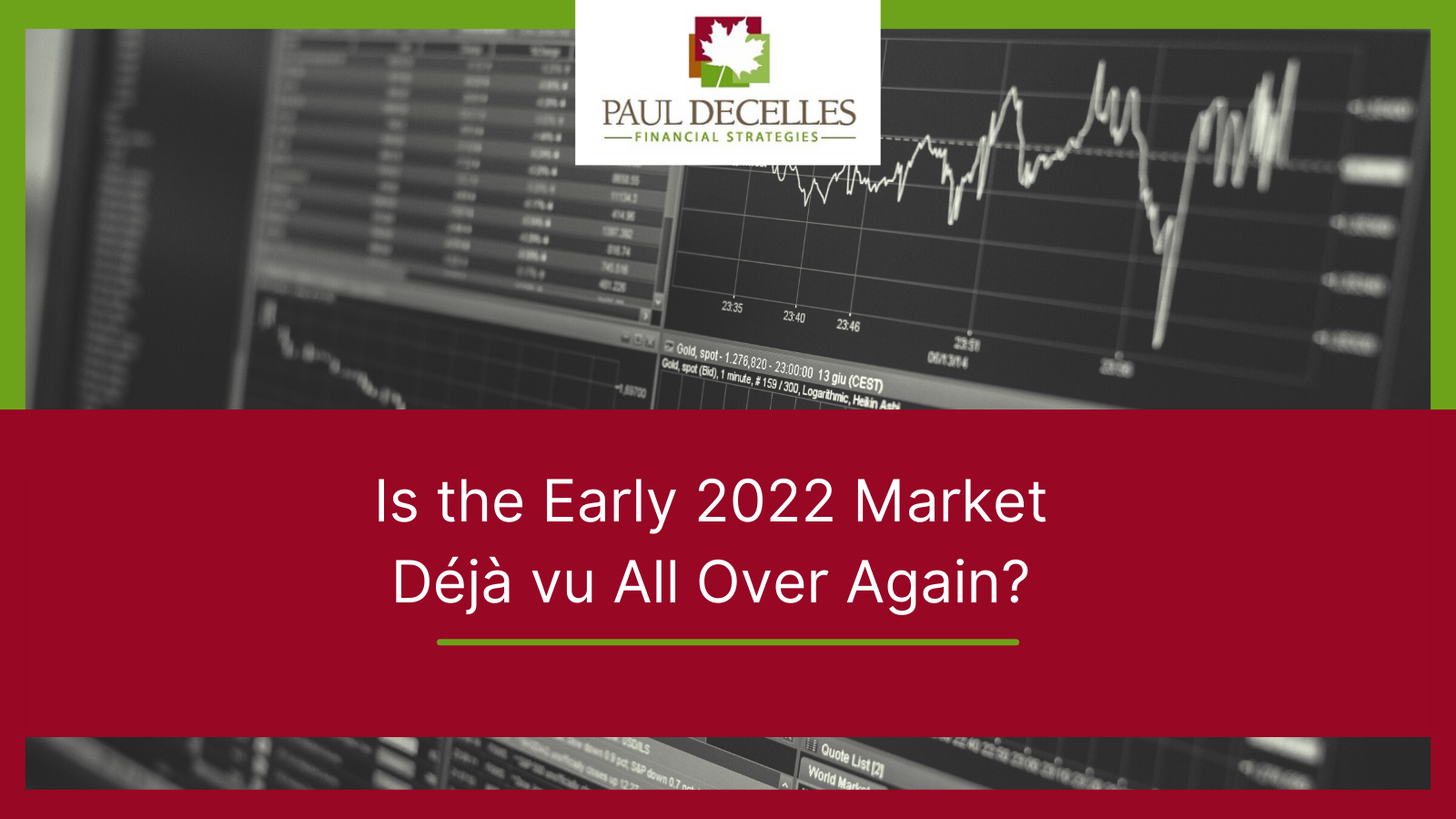Is the Early 2022 Market Déjà vu All Over Again?

A few pointers to help avoid a double-drubbing this time
Stoicism amid market turmoil comes hard when a tsunami of dire investment headlines and plunging prices hits you, as we’ve seen for the first 2+ months of 2022.
Your financial future rides on Wall Street. What should you do?
It is Déjà vu All Over Again?
Let’s look at recent history. In 2008, the problem was credit risk fears, rising inflation and collapsing home prices – along with oil hitting $100 a barrel. This time the culprits are different, but very much the same, with investors worried about credit risk fears, rising inflation and Russia’s aggression – along with oil hitting $100 a barrel.
The effect remains the same: double-digit drops and a possible bear market’s roar announcing a nasty market correction – the first in about two years (as of early March, the S&P 500 was down close to 10% for the year and NASDAQ was pretty far into correction territory).
Consider the mistake some investors made exiting markets in 2008-09. Or those exiting markets in March of 2020 (stocks bottomed on March 23rd by the way). Those investors selling locked in steep losses and often were too nervous to get back into markets as prices rebounded.
The result: a double-drubbing.
Here are some pointers to keep in mind in the current market turmoil.
Market Timing Fails
Stocks outperform other asset classes – even considering bouts of steep decline.
Investing in stocks means remaining disciplined through both good times and bad – and no formula exists for consistently timing markets to buy at the bottom and sell at the top. Investors who attempt such timing often get sub-par returns because they actually often end up doing the opposite: buying high and selling low.
Free Lunches are a Myth
Higher historic returns on stocks go hand in hand with higher volatility. Conversely, we expect a lower return from bonds in exchange for lower volatility. Pursuing higher long-term returns means accepting accompanying risk, period.
Your portfolios should be based on your specific financial and personal circumstances. This conceptual purpose doesn’t change if stocks correct 10% or rise 10%. Yes you should rebalance regularly. But don’t buy or sell in a panic.
While fundamentals are little changed, lower prices make stocks more attractive, if anything.
Diversification Remains Key
Proper asset allocation is the one free lunch in the investment world. The magical effects of diversification – which help smooth returns over time – persist.
During a massive selloff, stocks, bonds, commodities, real estate and other asset classes may all exhibit weakness but this is a short-term phenomenon. Once we move beyond the urge to excessively sell in a panic, the benefits of diversification again become obvious.
Avoid Emotional Reactions
Your core portfolio needs to be sufficiently diversified (multiple assets classes with lower correlations) to give you the highest probability of working towards your goals for the reasons important to you.
Stick to your core portfolio and look to rebalance so you remain on track long after you forget the scary headlines.
Important Disclosures
The opinions voiced in this material are for general information only and are not intended to provide specific advice or recommendations for any individual.
Investing involves risks including possible loss of principal.
Past performance is no guarantee of future results.
Asset allocation does not ensure a profit or protect against a loss.
Rebalancing a portfolio may cause investors to incur tax liabilities and/or transaction costs and does not assure a profit or protect against a loss.
Credit risk is the risk of loss of principal or loss of a financial reward stemming from a borrower’s failure to repay a loan or otherwise meet a contractual obligation. Credit risk arises whenever a borrower is expecting to use future cash flows to pay a current debt. Investors are compensated for assuming credit risk by way of interest payments from the borrower or issuer of a debt obligation. Credit risk is closely tied to the potential return of an investment, the most notable being that the yields on bonds correlate strongly to their perceived credit risk.
Inflation is the rate at which the general level of prices for goods and services is rising, and, subsequently, purchasing power is falling.
S&P 500 Index: The Standard & Poor’s (S&P) 500 Index tracks the performance of 500 widely held, large-capitalization US stocks.
The NASDAQ-100 is composed of the 100 largest domestic and international non-financial securities listed on The Nasdaq Stock Market. The Index reflects companies across major industry groups including computer hardware and software, telecommunications, retail/wholesale trade and biotechnology, but does not contain securities of financial companies.
All information is believed to be from reliable sources; however LPL Financial makes no representation as to its completeness or accuracy.
This article was prepared by FMeX.
LPL Tracking #1-05252821





